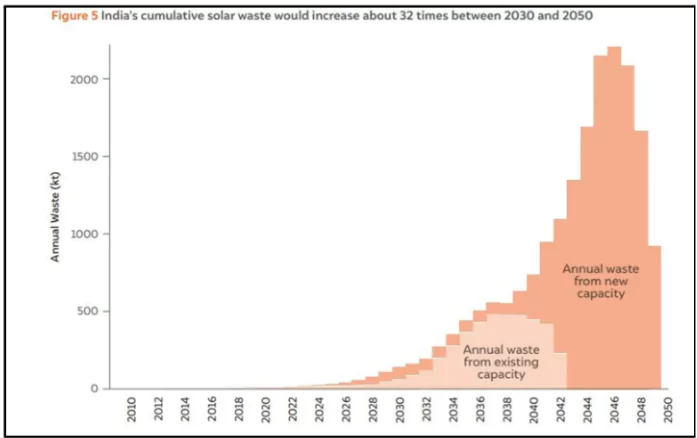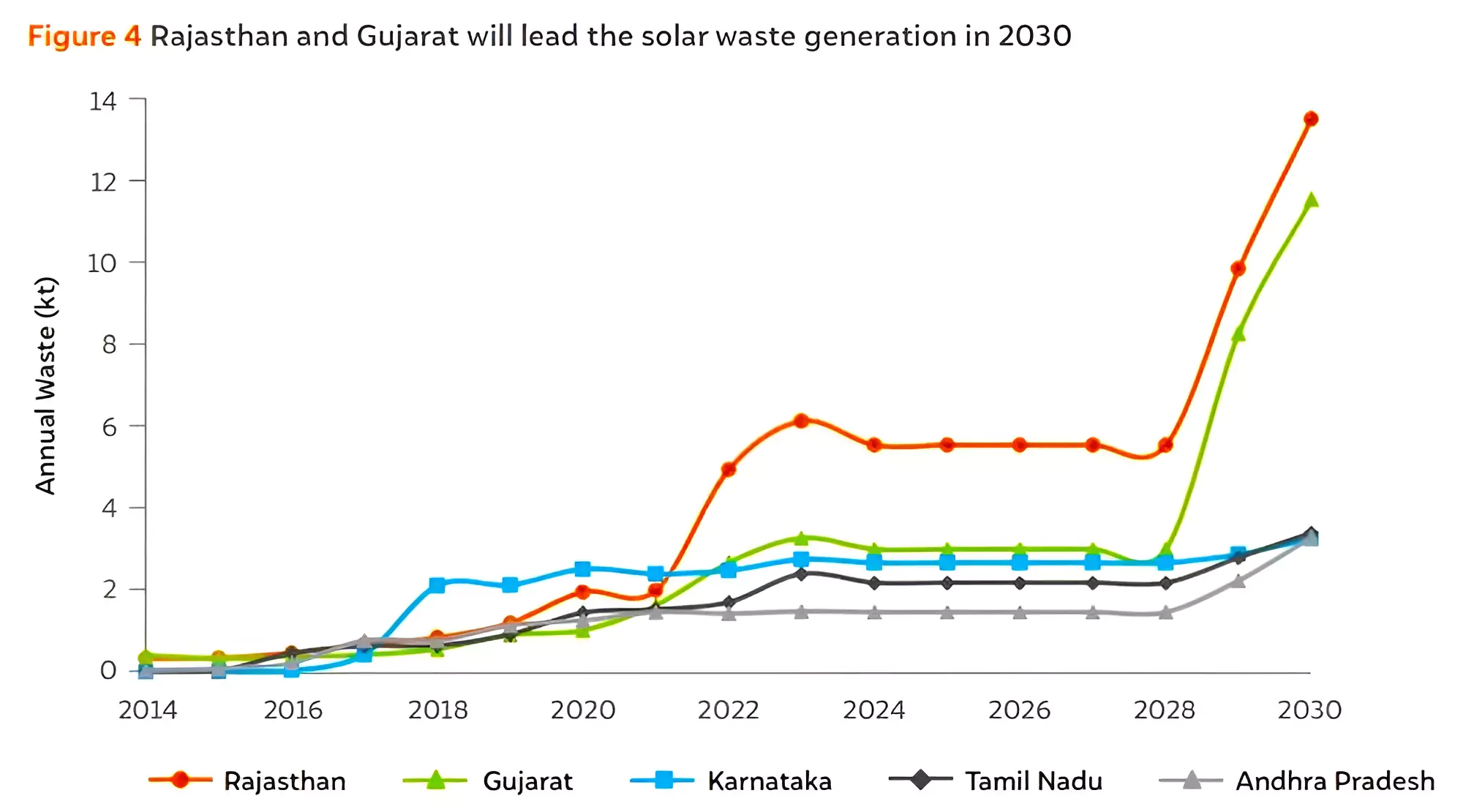A recent study ‘Enabling a Circular Economy in India’s Solar Industry – Assessing the Solar Waste Quantum’ has been conducted by the Ministry of New and Renewable Energy.
Pros of Addressing Solar Waste
|
Challenges in Addressing Solar Waste
|
 2030 Waste Projection: This waste is projected to increase significantly to 340 kilotonnes by 2030.
2030 Waste Projection: This waste is projected to increase significantly to 340 kilotonnes by 2030.
| Must Read | |
| NCERT Notes For UPSC | UPSC Daily Current Affairs |
| UPSC Blogs | UPSC Daily Editorials |
| Daily Current Affairs Quiz | Daily Main Answer Writing |
| UPSC Mains Previous Year Papers | UPSC Test Series 2024 |
To get PDF version, Please click on "Print PDF" button.
SC Verdict on Newsclick Shows Adherence to Due Pro...
Stay Invested: On Chabahar and India-Iran Relation...
Credit Rating Agencies, Impact on India’s De...
Catapulting Indian Biopharma Industry
Globalisation Under Threat, US Import Tariffs Have...
Global Report on Hypertension, Global Insights and...
<div class="new-fform">
</div>
